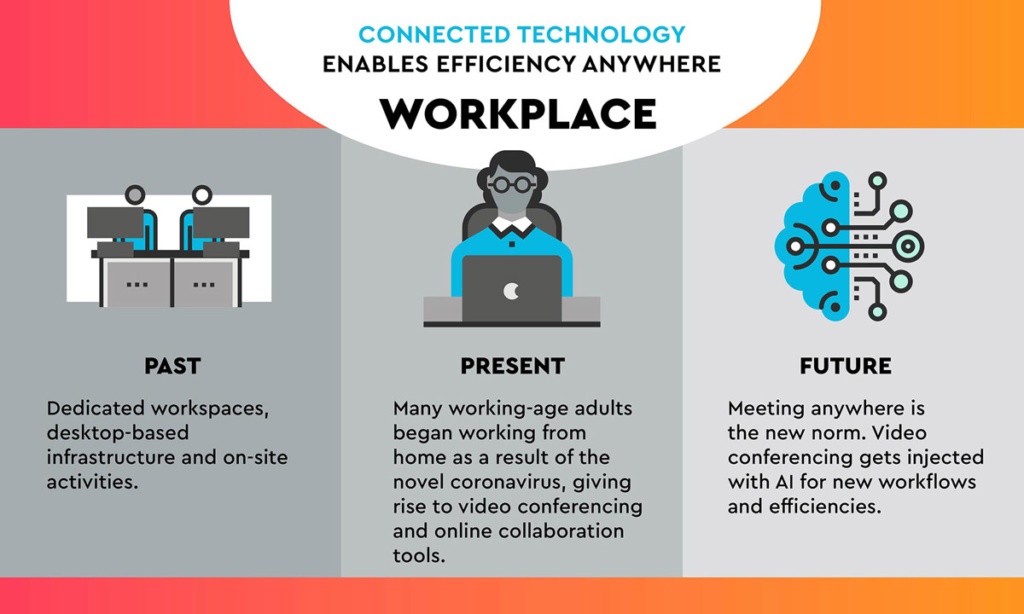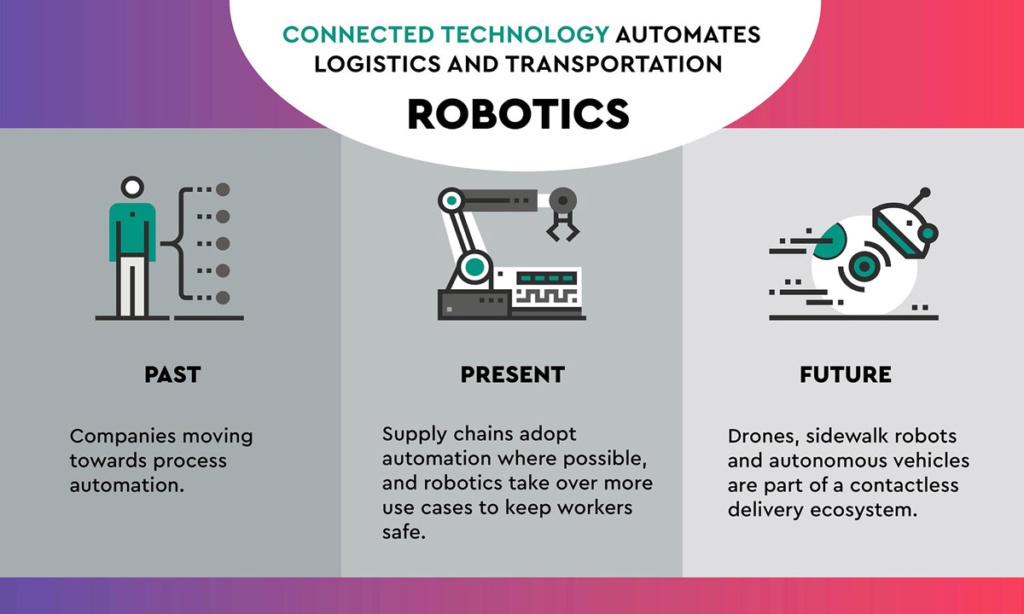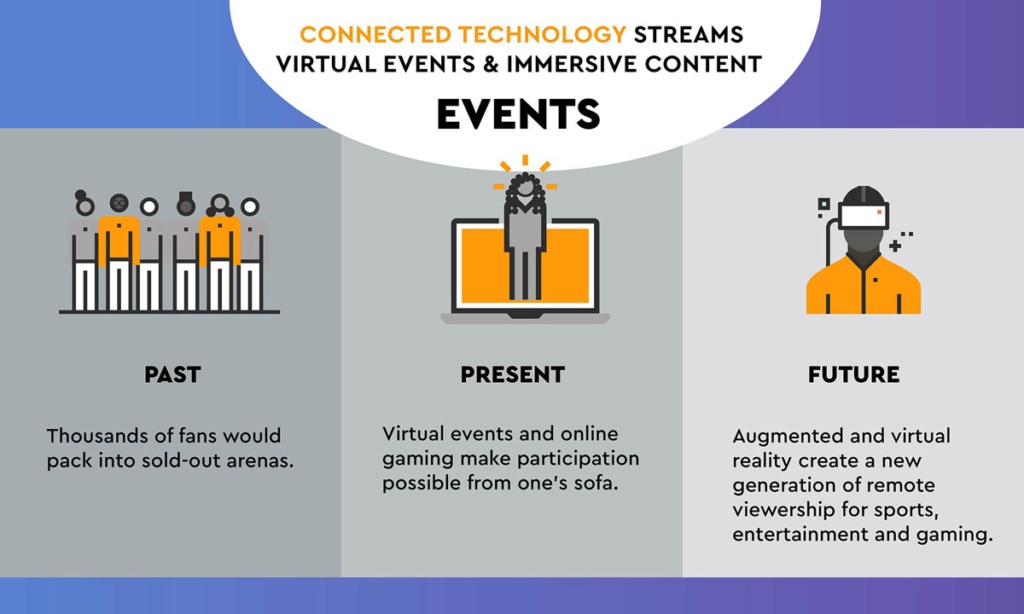Today’s connected technology has played a key role in helping us manage the crisis brought by the novel coronavirus. The abrupt growth in working and studying from home and the significant increases in online activities from households are pushing data demands to new heights. It has also given rise to new technologies and accelerated others dramatically. Some of these changes will continue beyond this pandemic, helping specific technologies and use cases evolve even further. Let’s take a closer look.
A Distributed Global Workforce
Millions of people around the globe have been encouraged to work at home, and the number of telecommuting workforces skyrocketed in a short amount of time. 56% of working-age adults in the U.S. have a job that is at least partially compatible with working from home, particularly as a result of COVID-19[1]. IT teams rolled out virtual workstations for employees to access critical enterprise applications. Remote employees are using video conferencing and team collaboration tools – such as in DevOps automation and project management – to facilitate barrier-free virtual connections. And this remote work trend has lead to increased enterprise demands in cloud data centers, which NVMe-oF platforms can address by scaling up data capacity, accelerating cloud compute and sharing disaggregated flash storage resources.
Find out the top nine IoT cases for enterprises
As we look into the future of video conferencing, artificial intelligence (AI) is another technology that comes into play. With the help of AI, user experience and team meeting efficiencies can be improved. AI-powered video conferencing could identify the best time for all attendees, cut out background noise in meetings, generate an automatic transcription of the discussion, or share action lists and notes. AI also takes care of the distractions, so teams can focus on knowledge-based problems. Additional tools, like virtual reality (VR) headsets, might develop in the long term to allow for a more immersive meeting experience.

Remote Learning as the Future Student Experience
Educational institutions have taken a big hit as well. Schools and universities across the globe began to turn to virtual learning options to keep teachers and students safe. Supporting technologies such as online learning management systems and video conferencing that have been developed over the last few years are proving to be useful.
During the pandemic, education shifted to remote learning. Multiple educational nonprofits and technology companies partnered with public schools to provide resources, tools, and training for instructors to stay connected with and teach their students. More students are accessing productivity software and applications through virtual desktops. In addition, the need for personal data storage through internal HDDs and SSDs or desktop drives to backup learning assignments, documents and projects becomes critical.
Looking ahead, distance learning might utilize augmented and virtual reality to create immersive learning experiences. Online learning could become a standard extension for classroom-based education. Schools might partner with IT departments to create distance learning “tech kits” for their students, including take-home laptops, networking equipment, and desktop data storage solutions.

Supply Chains Welcome Automation and Smart Robots
Automation was already top of mind for businesses looking to streamline processes for better efficiencies, control, precision and safety. COVID-19 has made the case for automation clear, and undoubtedly sparked a new wave of adoption[2]. When global supply chains are bottlenecked, autonomous technology helps to ease the burden. When social distancing is required, robots can take over tasks that put workers in danger.
Read this infographic about storage needs in industrial IoT
Embedded and removable flash drives are enabling smart factories that utilize automated robotics. In Denmark, the largest meat processing plant is able to leverage robots to do repetitive work in the production line – thanks to computer vision, deep learning and visual simulation technologies[3]. Robots are also answering an urgent call of duty in hospitals in China. Equipped with 3D cameras, robots can perform supply transportation and autonomous disinfection.[4] This is one of the critical steps to protect frontline healthcare workers and flatten the curve.
The pandemic has also created an interesting opportunity for sidewalk robots, drones and self-driving cars that make last-mile delivery more efficient and contactless. In fact, a leading e-commerce platform recently bought an autonomous vehicle startup to expedite self-driving car development[5]. An experimental branch of the world’s largest search engine has been conducting drone delivery tests since October 2019 and has expanded the items customers can order — from baked goods and coffee to toilet paper, medicine and toothpaste[6].

Virtual Events and Online Gaming from Your Couch
The outbreak of the novel coronavirus has caused numerous organizations to postpone or cancel public events. Event organizers are forced to re-think their strategy by going either fully virtual or a hybrid of in-person and online to connect and engage their audience. At the same time, online trade shows have seen a surge to meet the demand through video streaming platforms.
Shelter-in-place orders have also changed our stay-at-home entertainment options. People spending more time indoors are using video streaming services at higher rates. With existing platforms, you can visit the Louvre, save the world from zombies, or rock climb in Spain when sitting at home in your pajamas. Online gaming and esports have continued to grow in popularity — made possible by high-performance PC gaming rigs that use NVMe™ SSDs.
Explore how the edge is changing human-machine interactions
Looking ahead, augmented and virtual reality could make a new generation of remote viewership possible. Audiences might use augmented and virtual reality to immerse themselves into their favorite events, games, movies, or shows. With advancements in edge computing, a suite of technologies will enable the next generation of remote viewership, opening up new revenue possibilities for sports and performance artists, and reaching broader audiences. In addition, more gamers around the world are expected to come online. By 2023, the world’s 2.7 billion gamers are projected to spend over $200 billion USD on video games[7] — particularly mobile gaming and potentially wearable gaming devices.

More Connected Technology Innovation Ahead
As we all navigate the current crisis, one thing is certain: our world won’t look the same again at the other end. For some connected technology used in education, entertainment, robotics, and work, it is an accelerated evolution; for others, a bedrock for new ideas.
[1] https://globalworkplaceanalytics.com/work-at-home-after-covid-19-our-forecast
[2] https://www.prnewswire.com/news-releases/impact-of-covid-19-on-industrial-robotics-2020-2025—accelerating-spread-of-covid-19-pandemic-prompting-several-industries-to-adopt-automation-technologies-301048480.html
[3] https://www.wired.com/story/covid-19-makes-the-case-for-more-meatpacking-robots/
[4] https://www.cnbc.com/2020/03/18/how-china-is-using-robots-and-telemedicine-to-combat-the-coronavirus.html
[5] https://www.cnbc.com/2020/06/26/amazon-buys-self-driving-technology-company-zoox.html
[6] https://www.bloomberg.com/news/articles/2020-04-08/alphabet-s-delivery-by-drone-surge-to-stay-at-home-customers?sref=ExbtjcSG
[7] https://newzoo.com/insights/articles/newzoo-games-market-numbers-revenues-and-audience-2020-2023/
